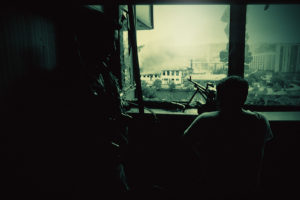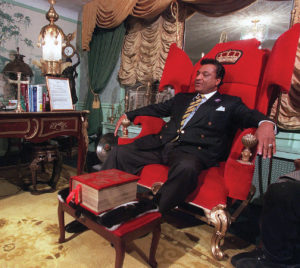Dear Sir,
The Persian Sasanian Empire conquered Jerusalem from 614 – 628 CE. What was the physical condition of the Temple Mount at Second Temple under the Sasanian Empire?
Looking forward your kind response.
Thank you.
Kalam Minda
???
Dear Mr. Minda,
The longest war between the Eastern Roman Empire and the Sassanid kingdom of Persia began with some 20,000 resident Jews joining King Khosrau’s Sassanid army in hopes of regaining Jerusalem. In 613, the Sassanids, led by General Shahrbaraz defeated the Byzantines at Antioch, cutting the Eastern Roman Empire’s possessions in the Levant from its political base in Constantinople. Pressing on into Palestina Prima in hopes of establishing a Persian naval base on the Mediterranean coast, Shahrbaraz invested Jerusalem and demanded its surrender—which the Christians refused to do. During the 21-day siege that ensued, a Jewish rebellion broke out, with some 26,000 rising against the Christians who, in spite of official Byzantine policy of religious tolerance, had so repressed them as to drive them into the arms of the Zoroastrian Sassanids, whose tolerance seemed more genuine.
In July 614, Jerusalem fell and Shahrbaraz’s troops sacked the city—the standard consequence of refusing to surrender when originally given the chance. He made the Jewish exilarch Nehemiah ben Hushiel governor of Palestine in a “Jewish-Sassanid commonwealth.” He also enslaved some 35,000 Christians, including the Patriarch Zacharias. According to the contemporary monk Antiochus Strategos, the Jews bought another 66,509 Christian slaves just for the vindictive satisfaction of slaughtering them.
At that time the Temple Mount in Jerusalem is known to have had a Byzantine religious or public building on it, but according to Antiochus Strategos, it was razed to the ground (modern archaeologists, however, have found no evidence of burned or demolished buildings dated to 614, suggesting that Antiochus might have had his own chronicler’s axe to grind). Nehemiah ben Hushiel restored sacrificial services on the Temple Mount—the first such services in about 500 years—and he planned to rebuild the Temple. Around 617, however, his fortunes changed. A charismatic mystic, Nehemiah apparently had messianic ideas that made the Sassanids nervous. In 617 Shahrbaraz, deciding it more politic to make his peace with the more numerous Christians of occupied Jerusalem, removed Nehemiah from office, subsequently had him and his “Council of the Righteous” executed, after which delighted Christians dragged their bodies through the streets. The Sassanids also issued an ordinance prohibiting Jews from living within a three-mile radius of the city.
All of these efforts ended up being in vain in 628, when a resurgent Eastern Roman army led by Heraclius retook Jerusalem and drove the Sassanids back eastward—where he also managed to recover the True Cross when he took the city of Ctesiphon in 629. At that time the Temple had been partially rebuilt, but the Byzantines swiftly put a stop to that by demolishing the project and converting the Temple Mount to a garbage dump—which is how the Arab Muslims found it when they seized Jerusalem in 637.
Sincerely,

Jon Guttman
Research Director
World History
www.historynet.com
More Questions at Ask Mr. History
Don’t miss the next Ask Mr. History question! To receive notification whenever any new item is published on HistoryNet, just scroll down the column on the right and sign up for our RSS feed.




